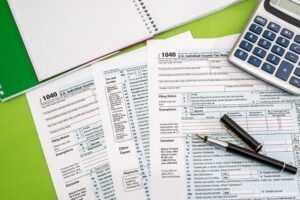12 ways to pay less tax

1. Use RRSPs and TFSAs
Of all the tax tips that follow, this is the most important — after all, it’s the number one way to thwart the taxman.
This graph shows, over 40 years, that an RRSP to which you make weekly contributions of $100 grows much faster than a regular taxable savings account.
2. Don’ts
You do not have to purchase tax software to use NETFILE. The Canada Revenue Agency lists several certified and 100% free online programs that are compatible with its systems (see cra-arc.gc.ca ).
3. Keep the bonds in your RRSP
Have you reached your RRSP and TFSA contribution limit? You are a champion! It’s time to start investing somewhere other than these tax-sheltered accounts. Whatever you do, keep bonds and fixed income securities inside your RRSP.
4. Liquidate your losses
Having to sell a real estate investment or a losing stock at a loss is not pleasant — but there is a silver lining. You can use this loss, called a capital loss, to offset capital gains generated by other investments during the year.
Tax savings: The amount saved depends on the number of rising stars and deadweights in your portfolio, but it can be considerable.
5. Don’t miss it!
Bought a transit pass? If it covers at least 28 consecutive days, you can claim 15% (12.5% after Quebec abatement) of its value — and there is no limit on the amount claimed.
6. “Fake” a loss
There’s an easy — and perfectly legal — way to get around the Canada Revenue Agency’s dreaded “superficial loss” rule. You cannot sell a losing security to claim a capital loss and then buy it back immediately. But you can sell an exchange-traded fund (ETF) that is performing poorly, claim a capital loss, and buy a similar but not identical ETF.
Tax savings: Can be significant, but be sure to follow the rules.
7. Investment by spouse with lower income
Want your capital gains to be taxed at the lowest possible rate? Have the member of your couple whose income is lower make all the investments while you assume the current expenses of the household.
Tax savings: Maybe thousands of dollars. It depends on the return on your investments and the difference between your respective incomes.
8. Ask carefully for the Family Tax Cut
The amount you save through the Family Tax Cut depends on the difference between the spouses’ respective taxable incomes. When the person with the higher income makes an RRSP contribution, the result is a reduction in their taxable income (because the amount you contributed does not count). This could in turn reduce the difference between your respective incomes, and therefore the amount you get from the Tax Cut.
9. Save with a spousal RRSP
Do you have unused RRSP contribution room (and a spouse)? Try this: create a spousal RRSP account and make contributions on behalf of the lower-income member of the couple. The benefits will be the same as contributing to your own RRSP (Tax Refund for Contributions), but here’s the trick: when you withdraw the money later, it will be taxed at a lower rate, depending your spouse’s lower income. This strategy is not recommended for common-law spouses. In addition, you should pay attention to the minimum period of 3 years!
10. Don’ts!
Tax efficiency should never be the primary reason for buying an investment. Start by building your assets well, taking into account your risk tolerance and investment goals, then look for the tax benefits.
11. Can we deduce that?!
Gambling losses: If gambling is your primary livelihood, you may be able to deduct your losses as a business loss.
12. You can also deduce this
Banjo rental: Professional musicians can deduct the cost of renting and insuring their instruments. Everyone up for a rig!







